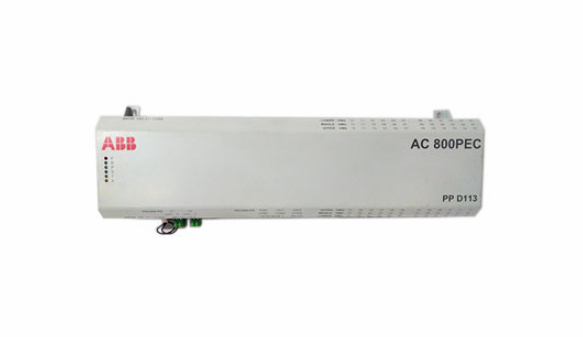The development and future prospect of urban sewage treatment
(2) The lagging development of the sewer system. This, on the one hand, leads to inadequate wastewater collection (approximately 90% sewer access rate in 2018) and, on the other hand, to a low sewage treatment plant operation rate (86%). Such inadequate municipal wastewater collection coupled with stormwater dilution significantly reduces organic strength while increasing pollutant complexity at wastewater treatment plant intakes.
As a result, the organic matter in the wastewater was insufficient to support denitrification and anaerobic sludge digestion. The low organic content and high sediment content of wastewater sludge make it impossible for anaerobic digestion treatment. It is estimated that less than 3% of China's wastewater treatment plants are equipped with anaerobic digestion facilities, and a significant number of them are not functioning well. As a result, there is basically no energy recovery in China's sewage treatment plants, let alone the recovery of nutrient resources. How to improve the sustainability of wastewater treatment in China remains a key issue to be solved.
(3) The connection between the wastewater discharge standards of sewage treatment plants and local conditions and environmental protection requirements is not close. The geographical diversity of wastewater nature, environmental conditions and level of economic development in China means that it is necessary for different wastewater treatment plants to adopt a tailored approach, flexible technology and wastewater discharge standards, rather than the uniform model currently prevailing.
At present, a new round of upgrading of wastewater treatment plant discharge standards is under consideration for regional differences. But the new standard sets limits for special pollutants that are close to Level 4 surface water quality standards. A central dispute is whether it is necessary and economically feasible to implement such stringent emissions standards across the country.

(4) The treatment of sludge in sewage treatment plants has received little attention. As a result, a large amount of contaminant-enriched sludge from sewage treatment plants ends up returning to the environment without proper disposal as another source of pollution. On the other hand, the operation of sewage treatment plants often disturbs the lives of nearby residents due to the smell and noise generated. With the development of urbanization, this problem becomes more and more prominent, and many existing sewage treatment plants are gradually surrounded by urban communities. Therefore, establishing a harmonious relationship between the environment and human society in the sewage treatment plant poses another challenge to China's wastewater management.
Step 3 Look ahead
3.1 Future wastewater management objectives
Although there are disputes over specific discharge standards, it is certain that China's wastewater industry will implement more stringent and global water pollution controls in the future. In fact, many provinces and cities such as Beijing, Tianjin, Jiangsu, Zhejiang and Hunan have started to implement stricter wastewater standards for local sewage treatment plants. In line with international trends, the next step will be to strengthen controls on emerging pollutants and water recycling, which is still in its infancy in China. Therefore, the goal of wastewater management has shifted from reducing pollutants to water reuse, resource recovery and water ecological restoration. This shift in purpose is reflected in China's recent policy revolution.
3.2 Policy Formulation
For many years, China has followed the end-pipe pollution control strategy, which emphasizes wastewater treatment and water environment remediation. However, the overall environmental quality has not been significantly improved. In 2015, the Chinese government issued the Water Pollution Control Action Plan, ushering in a new era of water environmental protection aimed at improving overall quality. Water ecology, not simple water quality control. This means that the field of pollution control will be extended from sewage treatment plants to sewer networks upstream and rivers and wetlands downstream. Therefore, it is encouraged to simply and uniformly improve the effluent standard of sewage treatment plants, rather than simply improve the sewage collection and sludge treatment capacity of sewage treatment plants. Recent guidelines issued by the Chinese government emphasize the urgency of overcoming the bottlenecks of inadequate wastewater collection and poor treatment facilities.
3.3 Technical Fields
The achievement of the above wastewater management objectives will depend on the development of more effective and sustainable pollution control strategies. In terms of wastewater treatment, treatment technology has mainly developed in three directions:
(1) Improve activated sludge process. A typical example is aerobic granular sludge. Due to the advantages of good wastewater quality, energy saving, and small footprint, the process has been intensively studied over the past decade and has now been successfully demonstrated in multiple wastewater treatment plants in Europe and Africa.
- EMERSON
- Honeywell
- CTI
- Rolls-Royce
- General Electric
- Woodward
- Yaskawa
- xYCOM
- Motorola
- Siemens
- Rockwell
- ABB
- B&R
- HIMA
- Construction site
- electricity
- Automobile market
- PLC
- DCS
- Motor drivers
- VSD
- Implications
- cement
- CO2
- CEM
- methane
- Artificial intelligence
- Titanic
- Solar energy
- Hydrogen fuel cell
- Hydrogen and fuel cells
- Hydrogen and oxygen fuel cells
- tyre
- Chemical fiber
- dynamo
- corpuscle
- Pulp and paper
- printing
- fossil
- FANUC
- Food and beverage
- Life science
- Sewage treatment
- Personal care
- electricity
- boats
- infrastructure
- Automobile industry
- metallurgy
- Nuclear power generation
- Geothermal power generation
- Water and wastewater
- Infrastructure construction
- Mine hazard
- steel
- papermaking
- Natural gas industry
- Infrastructure construction
- Power and energy
- Rubber and plastic
- Renewable energy
- pharmacy
- mining
- Plastic industry
- Schneider
- Kongsberg
- NI
- Wind energy
- International petroleum
- International new energy network
- gas
- WATLOW
- ProSoft
- SEW
- wind
- ADVANCED
- Reliance
- YOKOGAWA
- TRICONEX
- FOXBORO
- METSO
- MAN
- Advantest
- ADVANCED
- ALSTOM
- Control Wave
- AB
- AMAT
- STUDER
- KONGSBERG
- MOTOROLA
- DANAHER MOTION
- Bently
- Galil
- EATON
- MOLEX
- Triconex
- DEIF
- B&W
- ZYGO
- Aerotech
- DANFOSS
- KOLLMORGEN
- Beijer
- Endress+Hauser
- MOOG
- KB
- Moxa
- Rexroth


Email:wang@kongjiangauto.com
























































































































